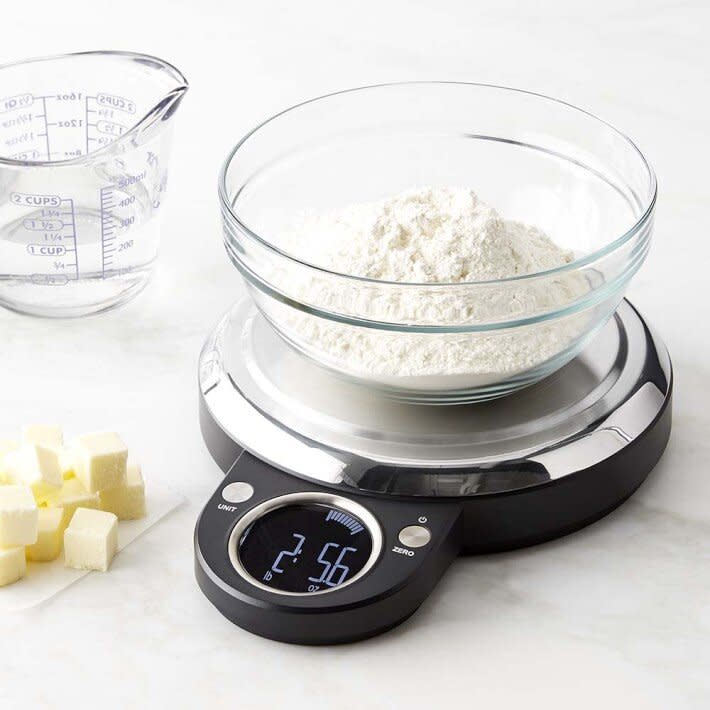Why Every Home Baker Needs a Kitchen Scale

Courtesy of Williams-Sonoma
If you do any baking at all, you've probably learned about the importance of carefully measuring your ingredients. A carelessly measured cup of flour that's packed down or heaped up can sabotage the hours of effort you just expended in the kitchen. Need a refresher on measuring flour? See our test kitchen team's go-to "scoop and level" (otherwise known as "spoon and sweep") method.
But there's one problem with this method: If you've ever looked at recipes written by professional pastry chefs—or if you've ever tried to bake from a cookbook from just about any country other than the U.S.— you've probably noticed that many of them measure their ingredients by weight rather than volume. This is inconvenient for most American home cooks who are used to their trusty measuring cups and likely don't own a scale. But once you get used to measuring ingredients by weight on a kitchen scale, you'll never go back. Simply put, a kitchen scale is by far the most precise way to measure ingredients. The scale takes all of the guesswork out of measuring, and the scale never lies! No more packing your brown sugar. No more wondering if you properly leveled off the measuring cup, or if you lost count between the third and fourth cups that you measured. A kitchen scale will give you consistent results every time.
And there's even more good news: You don't have to spend a fortune to get a reliable scale that will serve you well in the kitchen. Whether you go with a budget pick—like the sturdy, compact Ozeri Pronto Digital Multifunction Kitchen and Food Scale ($13.96, amazon.com)—an impressive middle-range option—like the OXO Stainless Steel Food Scale ($49.99, oxo.com), which has a pull-out display so you can see it even when you place big bowls or plates on it—or a splurge—like the All-Clad Kitchen Scale ($99.95, williams-sonoma.com), which can weigh foods up to 22 pounds—one of these countertop gadgets will truly change how you bake.
Baking is a (delicious) science project, and you'll always get the best outcome when you calculate carefully at every step. If you've ever wondered why your breads, cakes, cookies, and muffins didn't turn out like the picture on the recipe, try weighing your ingredients next time. Seek out recipes that use weight measurements, or use the chart below to convert your recipe from volume to weight measures.

We also have a number of professional-level baking recipes that use weight measurements. Once you get your own scale, try Tartine Bakery's Country Bread and Pressure-Caramelized Oat Bread. Our recipes often call for frozen puff pastry as a shortcut, when you make puff pastry from scratch you need a scale for precision. That's also true for pâte à choux or classic French macarons.

